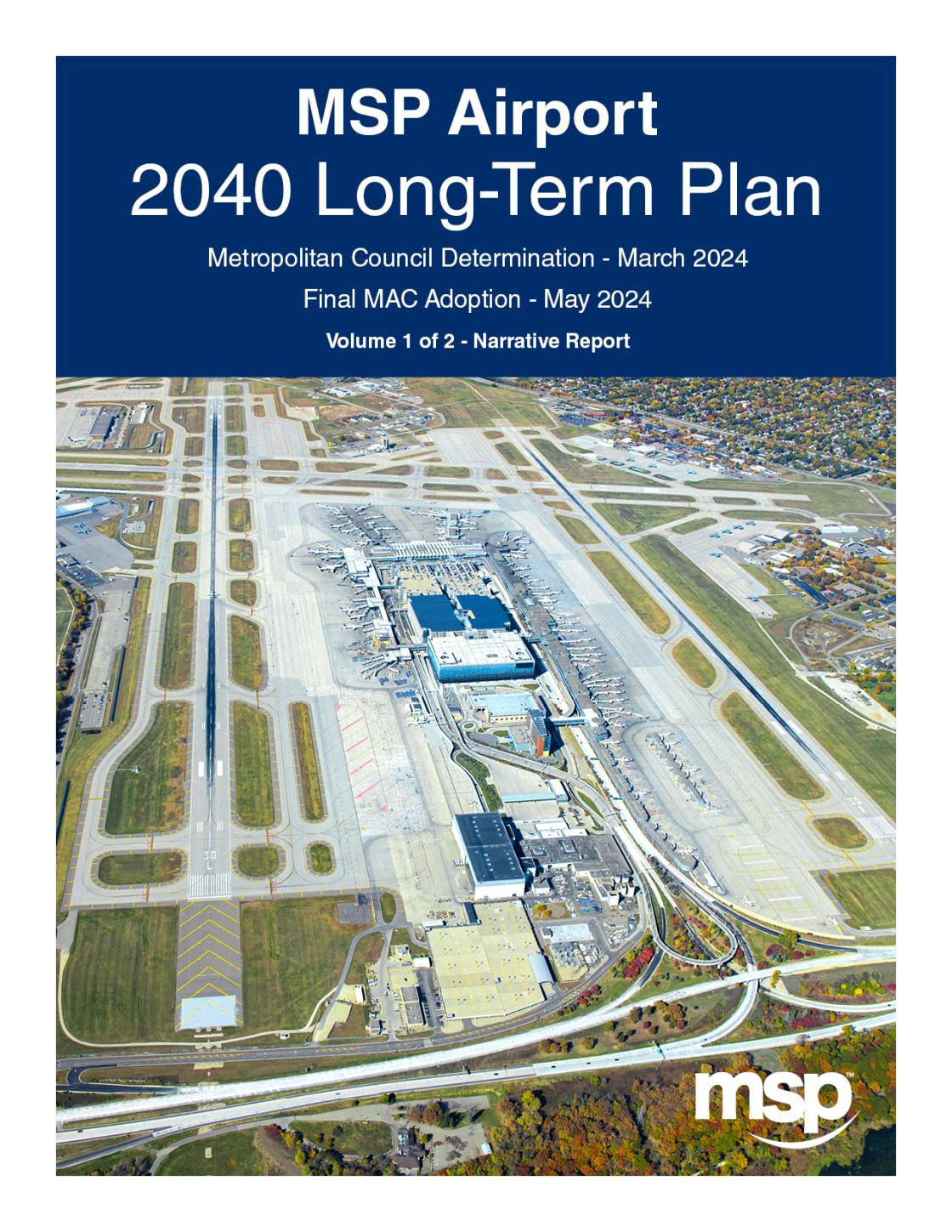The final adopted MSP Airport 2040 Long-Term Plan is available here.
The final appendices to the plan are available here.
You can also view a video on the 2040 Long-Term Plan.
MSP Airport Long-Term Plan
The MSP Airport 2040 Long-Term Plan (Plan) is a forward-looking planning tool that studies facility and infrastructure needs based on projected passenger and operations numbers.
The Metropolitan Airports Commission (MAC) – the airport authority that owns and operates MSP Airport - began the planning process in mid-2019 and expected to finalize the plan in early 2021. In March 2020, COVID-19 seriously disrupted day-to-day operations at MSP. Due to the uncertainty caused by the pandemic in terms of airport facility requirements and airline and concessionaire operations, the Long-Term Plan was paused for 19 months. This allowed the MAC and its stakeholders to focus on business recovery and to better understand the lasting impacts a global pandemic will have on facility needs. The Long-Term Plan is now expected to be completed in early 2023.
The planning process will evaluate when facility improvements are needed to accommodate projected demand in a manner that is safe, efficient, orderly and cost-effective and that maintains and enhances customer service.
The Plan does not authorize construction or improvements to facilities. Nor does it serve as the basis for determining eligibility for noise mitigation programs. Rather, it helps the Metropolitan Airports Commission, better understand and plan for future facility needs.
Goals
- Plan for future facilities that will meet projected passenger activity levels in a manner that maintains and enhances customer service, while facilitating a seamless, "one-journey" experience.
- Produce a development plan that positions the MAC to meet future demand levels, enhances financial strength, leverages environmental stewardship, and infuses sustainable thinking.
- Conduct the planning process in a manner that includes meaningful stakeholder engagement processes.
Process
The process includes these steps:
- Inventory and document existing facilities and aviation activity levels to establish baseline conditions
- Forecast MSP aviation activity levels (passengers, cargo, and aircraft operations) out to the planning horizon of 2040
- Determine the gap between the baseline condition and future conditions based on forecasted activity levels (“gap analysis")
- Develop and evaluate alternative means to remedy facility deficiencies identified through the process and meet future forecasted demand
- Determine a proposed development program, funding plan, and implementation strategy to present to the community and the MAC board
- Prepare an overview of environmental factors that should be taken into consideration when implementing the plan
A robust community and stakeholder engagement program – including the creation of a stakeholder advisory panel - will accompany various phases of the planning process, providing ample opportunities for public information, input, and discussion.
